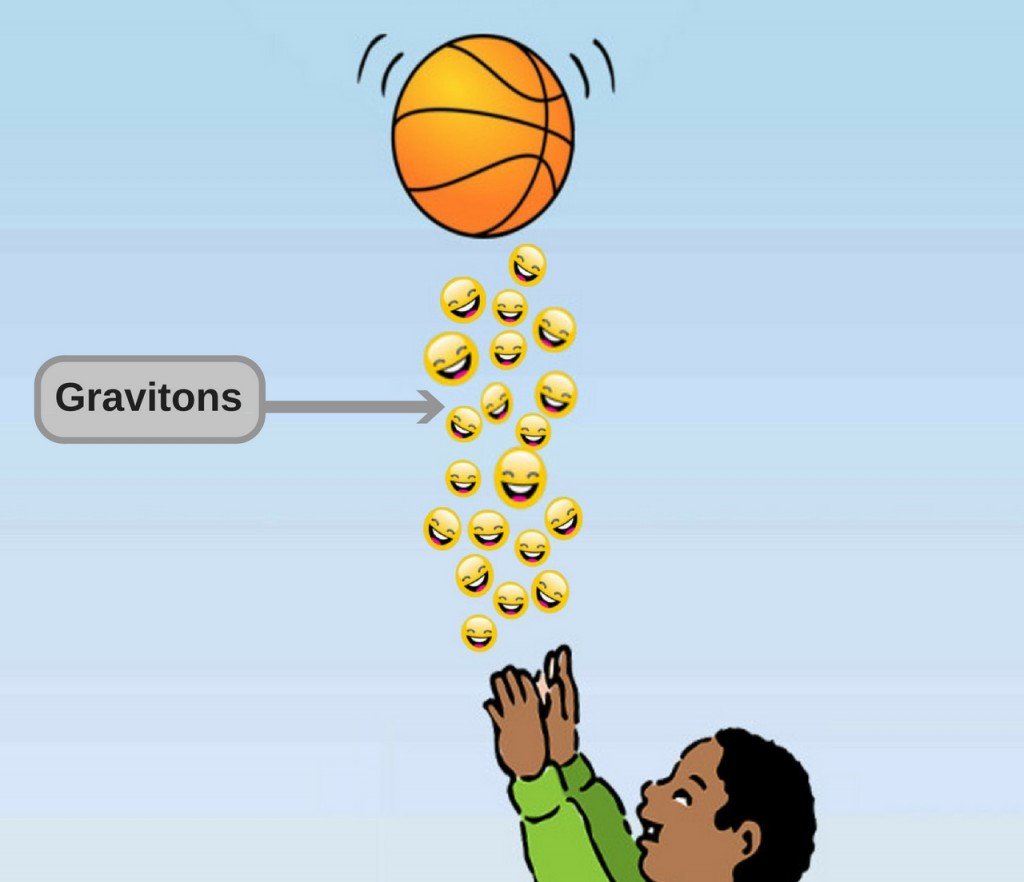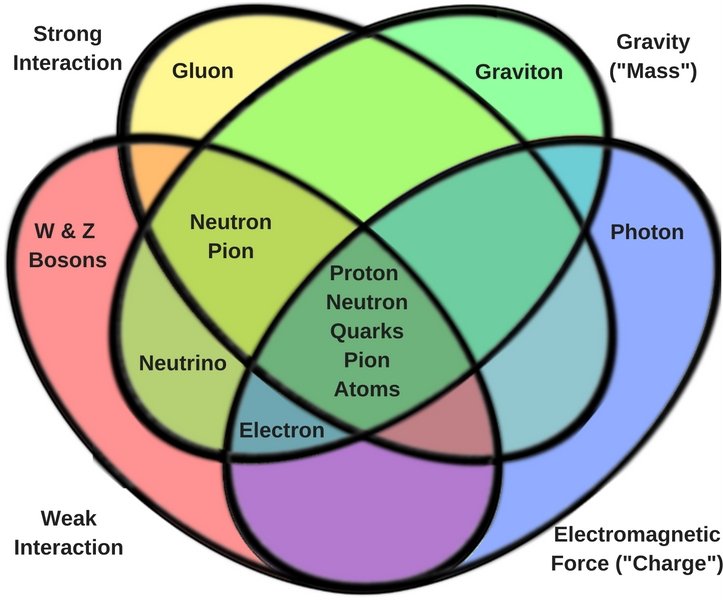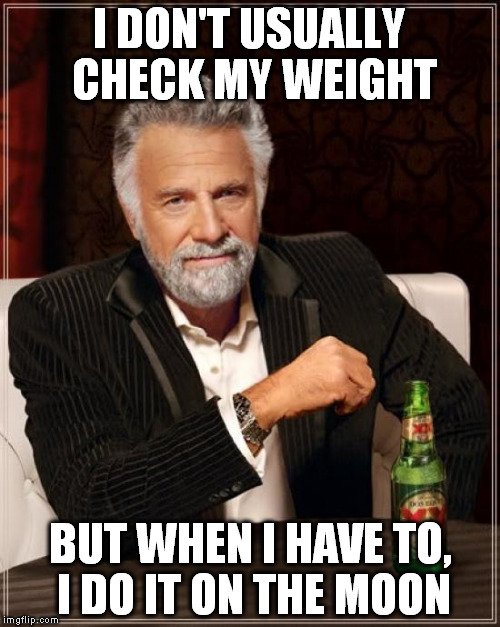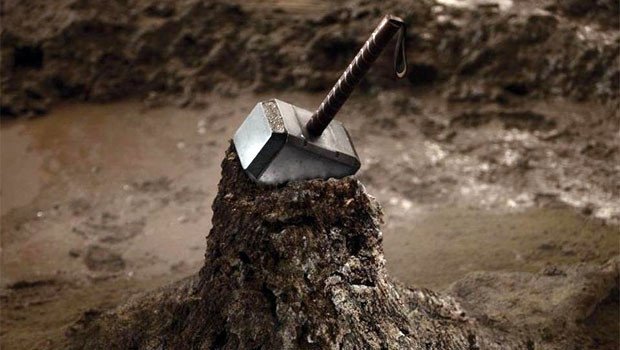Gravitons are the fundamental particle that mediates gravitational force in the quantum field theory; in other words, it carries the force of gravitation. To put it more plainly, when you throw something up and it comes back down due to gravity, it’s essentially the gravitons that pull it down.
In what has become an iconic scene from Avengers: Age of Ultron, Thor politely invites the other members of his team to try and lift his hammer, the mighty Mjolnir, which was resting atop a coffee table in Tony Stark’s penthouse. Quite predictably, no one was able to budge it (except Captain America, who managed to stir it just a tad bit).
Those who follow Thor either through movies or comic strips know all too well that his hammer is impossibly heavy, and try all they can, (almost) no one can lift it except for him, which sometimes leads to unforeseen problems…

While Thor’s hammer and everything related to it is purely fictional, there IS a scientific hypothesis that could account for the hammer’s incredible weight.
Enter Gravitons
Although it sounds like the name of a fictional character (there actually is a villain named Graviton in the Marvel Universe!), gravitons are a real thing… at least in theoretical physics. A graviton is the fundamental particle that mediates gravitational force in the quantum field theory; in other words, it carries the force of gravitation. To put it more plainly, when you throw something up and it comes back down due to gravity, it’s essentially the gravitons that pull it down.

Apart from the gravitational force, three primary forces exist in nature, all of which have their respective mediating elementary particles; light (electromagnetism) travels through photons, weak interaction is mediated through W and Z bosons, and the elementary particles carrying strong nuclear force are named gluons. All of these microscopic particles convey the forces that we observe on macro levels. Since gravitational force is also one of the primary forces of nature, it’s theorized that it must also have some elementary particle, which is when gravitons entered the picture.
However, it’s one thing to theorize something and quite another to prove its existence through experimental proof. As of now, the detection of gravitons is practically impossible because we lack a physically feasible detector. Since the force of gravitation is the weakest of all natural forces, it’s physically implausible to detect gravitons due to the infinitesimally small cross-section of interaction they have with matter.

Nevertheless, scientists know a thing or two about gravitons with considerable certainty. First of all, since gravitational force exists between any two particles, irrespective of their position relative to each other, the particles carrying that force between the two bodies must essentially be massless. Furthermore, they must carry a spin of 2, because the source of gravitation is the stress-energy tensor, which happens to be a second-order tensor. These attributes indicate that if a massless particle with a spin of 2 is detected, it must be a graviton.
Also Read: What Are Dark Photons And How Can They Be Detected?
However, What Do Gravitons Have To Do With Thor’s Hammer?
A great deal, actually.
You see, the force of gravitation is essentially the force that gives anything its weight (note that the ‘weight’ of an object is different from its ‘mass’, which is independent of all external forces). Consider this: the moon’s gravity is one-sixth of Earth’s, so if you weigh 60 kilograms here, you would weigh no more than 10 kilograms (60/6) on the lunar surface!

In short, the higher the gravitational force, i.e. the higher the number of gravitons, the heavier an object weighs – and vice versa. This infers that the mighty Mjolnir must somehow be tinkering with gravitons themselves!
Also Read: Why Free-Falling Makes You Weightless, Even In The Presence Of Gravity?
A Little Something About Mjolnir
Thor’s hammer, the mighty Mjolnir, is made of a fictional Asgardian metal called uru, and thus its composition and properties are obviously foreign to Earth. According to the movie Thor, Mjolnir was ‘forged in the heart of a dying star’. On the side of the hammer, there is an inscription that says, ‘Whosoever holds this hammer, if he be worthy, shall possess the power of Thor’. Essentially, this means that Mjolnir carries upon itself a ‘worthiness enchantment’, which makes it usable only to those it deems ‘worthy’.

The ability to tinker with gravitons must therefore lie with the hammer, and in effect, the metal (uru) itself. Looking at this from our Earthly perspective, it obviously seems way out of line to qualify as a property of an element, but to quote Arthur C Clarke’s famous third law, ‘any sufficiently advanced technology is indistinguishable from magic’. The metal uru may appear magical to us simply because it belongs to a planet that is technologically far more advanced than us. So, for now, let’s assume that due to its far more superior origins, uru is what we call ‘magical’.
Also Read: Can Asgard – The Home Of Thor – Exist In Reality?
Mjolnir’s Ability To Control Gravitons
James Kakalios, a Physics professor at the University of Minnesota and the author of The Physics of Superheroes, has proposed a very interesting hypothesis regarding Mjolnir’s incredible weight. He speculates that since the hammer is made of a foreign and presumably scientifically-advanced metal (uru), under proper external stimulus, it must be able to control the emission of gravitons!
So, when someone – let’s say the Hulk – tries to lift Mjolnir, it instantly calculates the holder’s ‘worthiness’ using some complex algorithm and decides whether or not he is worthy to wield the hammer. If it finds him worthy, he will lift it effortlessly (just like Thor does), but if not, the hammer increases the emission of gravitons to counter the upward force being applied to it. Thus, the harder the Hulk tries to lift the hammer, the greater the number of gravitons it will release and the heavier it will become. Notice (in the following image) how Hulk struggles to lift the hammer, despite applying so much upward force on it…

Although we haven’t had any success in detecting gravitons, we have been able to detect gravitational waves, which are made of a huge number of gravitons. Physicists are working around the clock to formulate a theory of quantum gravity that will indirectly confirm that gravitons exist; meanwhile, the superhero realm is busy making stuff heavier than it appears by manipulating these gravitons – or so we assume!
How well do you understand the article above!

